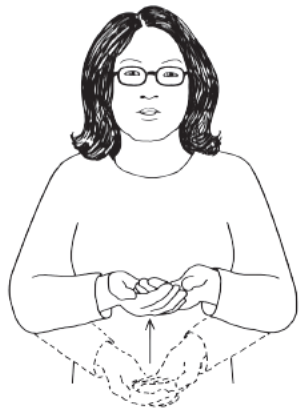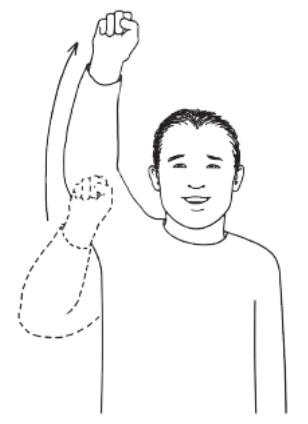The Possibility of Signs
by William B. Bonvillian
Would it be possible?
With this question, Gail Mayfield, the director of an autism program in rural Virginia, inspired a project that would absorb the talents and passions of a virtual army of students and some faculty at the University of Virginia for over two decades. The project, called Simplified Signs, created an easy-to-learn sign-communication system that could “quite possibly” change the lives of the millions of people who face challenges with spoken communication, as well as their parents, teachers, caregivers, and friends.
In the late 1980’s, when Gail Mayfield first posed her question, some of the best special education programs in the United States for non-speaking children with autism used and taught American Sign Language (ASL) for communication. The late John Bonvillian was a professor of Psychology and Linguistics at the University of Virginia doing research on the use of signs by some of Mayfield’s students. Bonvillian had been at the forefront of a movement to use sign language in special education programs and his research with Mayfield’s students with autism was part of his ongoing professional interest in sign language usage.
Bonvillian heard Mayfield’s simple and well-placed query and took it to heart. Her students could learn and benefit from the use of signs, but they often had difficulty with some of the ASL handshapes, and their communicative progress was limited. Mayfield felt that her students would be able to communicate more fluently if they had signs that were easier to form and to remember. Would it be possible to develop such signs?
Bonvillian was, by nature, a careful academic, so he approached the question first by investigating the sign language acquisition of the typically developing children of Deaf parents. He then could compare those findings against the signing difficulties encountered by Mayfield’s students and by other persons with motor and memory problems. He found that such individuals often struggled with certain hand formations and with signs that required multiple movements. He also found that many parents and caregivers had not become fluent signers themselves; as a result, the students did not experience the substantial benefit of living in an environment where signs were used and understood by everyone.
Working with a talented undergraduate student named Nicole Kissane, who later became one of his three coauthors, Bonvillian conceived of the Simplified Sign System project. Together, Bonvillian and his research group took the first step toward the possibility of easier signs. The project goals were to identify a modest working vocabulary of signs that were 1) easy to form because they did not include complex handshapes or movements and 2) easy to remember because they looked like what they represented (that is, they were iconic). Bonvillian and his team found many such signs in the dictionaries of Native American signs, previously developed sign systems, and the sign languages of Deaf persons. When they couldn’t find pre-existing signs that met their criteria, they created some signs on their own. They then tested each and every one of the potential signs on students at the University of Virginia to ensure that the signs met the project criteria for formation and recall. The resulting product, which has been more than twenty years in the making, is Simplified Signs: A Manual Sign-Communication System for Special Populations. It is a two-volume set consisting of a compendium of the research on signing (Volume 1) and a lexicon of signs (Volume 2).
Simplified Signs has proven that with dedication and persistence, what was once barely conceivable may indeed be possible. Literally hundreds of people have participated in making Simplified Signs possible. While John Bonvillian did not live to see the publication of his work, it survives as a living tribute to his talents, dedication, and generosity, as well as that of his coauthors and the many others who brought this project to completion. It is published through Open Book Publishers and available online free of charge so that everyone may have access to the signs and use them.
Today the answer to Mayfield’s question “Would it be possible?” is an unqualified yes. Simplified Signs are not only possible; they are here.
Let’s use some now!



Written by William B. Bonvillian on behalf of his brother, John. Illustrations used on banner and body text by Val Nelson-Metlay.



